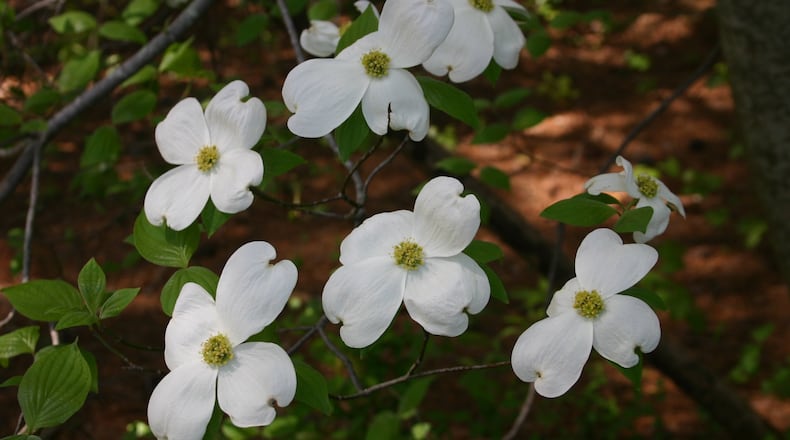Q: I have a dogwood tree that is about 20 years old. It did not bloom this year but has green leaves. Has it reached its life expectancy? Janice Rowe, Monroe
A: In perfect growing circumstances, a dogwood tree can last several decades. But in spots where the roots get hot or dry in summer and where grass competes for moisture and nutrients, dogwoods typically have a 20- to 30-year life span. Add mulch under your tree all the way out to the drip line and fertilize lightly with an organic fertilizer like Holly-Tone or Milorganite.
Q: We have a banana magnolia at the edge of our lot. For the last two years has been looking bad: no fragrant flowers, leaves are sparse, and some are yellow. Margaret Morris, Eatonton
A: Banana magnolia, Magnolia figo, is one of the most fragrant landscape plants around. It is common for evergreen plants like this to have a few yellow leaves in spring. Yours seems to be declining more than normal. Get a 1.5-cubic-foot bag of soil conditioner and dump it into a wheelbarrow. Add a quart of Holly-Tone, Milorganite or cottonseed meal. Mix thoroughly. Rake out the mulch under your tree and scatter a half-inch layer of your enriched soil mixture in its place. Use a spading fork or a pitchfork to repeatedly jab holes in the soil to loosen it and mix in the new material. The combination of the rich organic matter and increased root aeration should bring your plant back to health.
Q: Can you recommend a good fertilizer for our lovely deodar cedar tree? John Rainer, email
A: If your tree is near another area that is regularly fertilized, such as the lawn or your flower beds, it doesn't need fertilizing. It will get what it needs from the residue of the other plants. The main thing it needs is attention to water in the summer. Is the soil becomes dry, the cedar won't like it at all.
Q: How do I restore the bare places from fire ant hills in my centipede lawn that have been vacated with ant bait? Al Rhyne, Fayette County
A: Wait until early May when the soil is warm and drag a rake a couple times across each mound. Sprinkle centipede grass seeds very lightly over the spot, then use the back of the rake to firm the soil onto the seeds. Water to keep the area moist but not soggy. The grass should germinate and spread quickly.
Q: How do I keep bermuda grass from my neighbor's yard from spreading into my fescue? Jacob Chastain, email
A: If your neighbor has bermudagrass in his lawn, it is going to come into your lawn pretty quickly, particularly if they have “common” bermuda, not one of the sodded varieties. Common bermudagrass is an aggressive spreader and reseeder. All you can do is make a trip around the perimeter of your lawn every month and spray a narrow strip with glyphosate (Roundup, etc) to kill any of the neighbor’s invading grass runners.
About the Author
Keep Reading
The Latest
Featured


